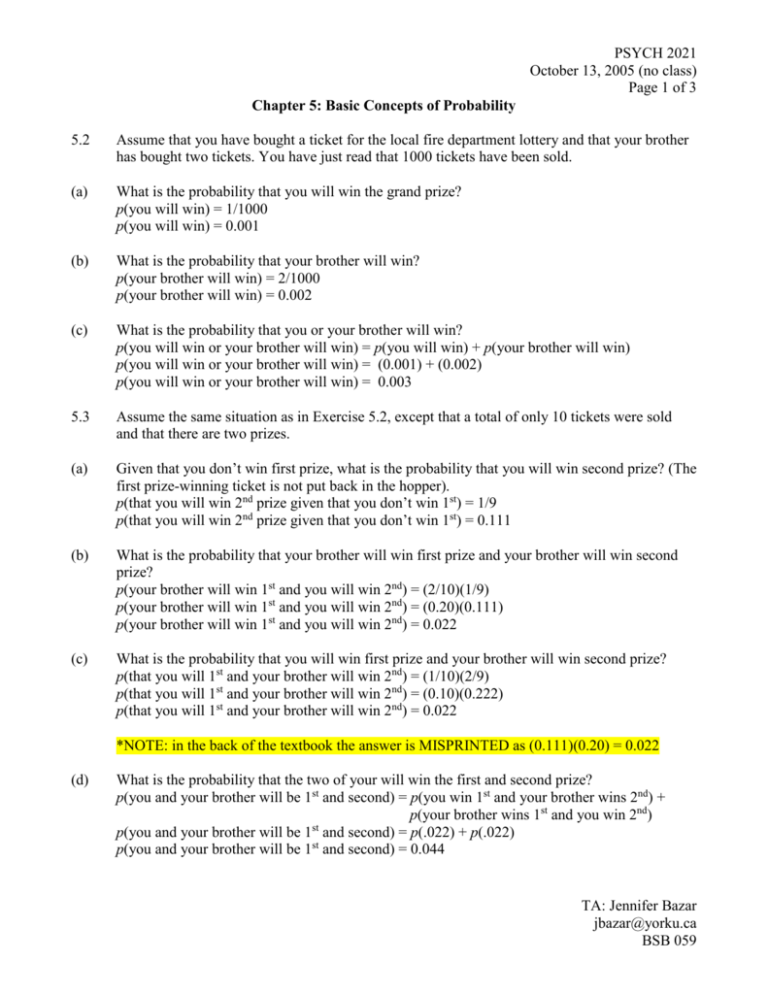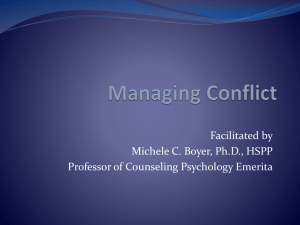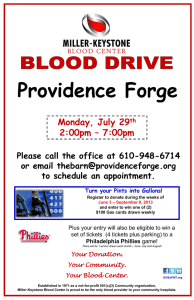Chapter 5: Basic Concepts of Probability
advertisement

PSYCH 2021 October 13, 2005 (no class) Page 1 of 3 Chapter 5: Basic Concepts of Probability 5.2 Assume that you have bought a ticket for the local fire department lottery and that your brother has bought two tickets. You have just read that 1000 tickets have been sold. (a) What is the probability that you will win the grand prize? p(you will win) = 1/1000 p(you will win) = 0.001 (b) What is the probability that your brother will win? p(your brother will win) = 2/1000 p(your brother will win) = 0.002 (c) What is the probability that you or your brother will win? p(you will win or your brother will win) = p(you will win) + p(your brother will win) p(you will win or your brother will win) = (0.001) + (0.002) p(you will win or your brother will win) = 0.003 5.3 Assume the same situation as in Exercise 5.2, except that a total of only 10 tickets were sold and that there are two prizes. (a) Given that you don’t win first prize, what is the probability that you will win second prize? (The first prize-winning ticket is not put back in the hopper). p(that you will win 2nd prize given that you don’t win 1st) = 1/9 p(that you will win 2nd prize given that you don’t win 1st) = 0.111 (b) What is the probability that your brother will win first prize and your brother will win second prize? p(your brother will win 1st and you will win 2nd) = (2/10)(1/9) p(your brother will win 1st and you will win 2nd) = (0.20)(0.111) p(your brother will win 1st and you will win 2nd) = 0.022 (c) What is the probability that you will win first prize and your brother will win second prize? p(that you will 1st and your brother will win 2nd) = (1/10)(2/9) p(that you will 1st and your brother will win 2nd) = (0.10)(0.222) p(that you will 1st and your brother will win 2nd) = 0.022 *NOTE: in the back of the textbook the answer is MISPRINTED as (0.111)(0.20) = 0.022 (d) What is the probability that the two of your will win the first and second prize? p(you and your brother will be 1st and second) = p(you win 1st and your brother wins 2nd) + p(your brother wins 1st and you win 2nd) st p(you and your brother will be 1 and second) = p(.022) + p(.022) p(you and your brother will be 1st and second) = 0.044 TA: Jennifer Bazar jbazar@yorku.ca BSB 059 PSYCH 2021 October 13, 2005 (no class) Page 2 of 3 5.4 Which parts of Exercise 5.3 deal with joint probabilities? Joint probability: the probability of the co-occurrence of two or more events In Exercise 5.3, joint probabilities were dealt with in sections (b), (c), and (d) 5.5 Which parts of Exercise 5.3 deal with conditional probabilities? Conditional probability: the probability that one event will occur given that some other event has occurred. In Exercise 5.3, conditional probabilities were dealt with in section (a) 5.18 Using Appendix Data Set, what is the empirical probability that a person will drop out of school given that he or she has an ADDSC score of at least 60? Here we do not need to assume normality. [“Appendix: Data Set” can be found in the textbook on page 728] This example is asking us to calculate the conditional probability that “a person will drop out of school” given that “he/she has an ADDSC score of at least 60 (60 or higher)” p(person will drop out of school│he/she has an ADDSC score of at least 60) = 7/25 p(person will drop out of school│he/she has an ADDSC score of at least 60) = 0.28 5.26 In a study of human cognition, we want to look at recall of different classes of words (nouns, verbs, adjectives, and adverbs). Each subject will see one of each. We are afraid that there may be a sequence effect, however, and want to have different subjects see the different classes in a different order. How many subjects will we need if we are to have one subject per order? PrN = N! (N – r)! P44 = 4! (4 – 4)! = (4)(3)(2)(1) 0! = 24 1 = 24 If we wanted every subject to get a different set of four classes of words but did not care about the order within a set, we would need 24 subjects. 5.27 Refer to Exercise 5.26. Assume we have just discovered that, because of time constraints, each subject can see only two of the four classes. The rest of the experiment will remain the same, however. Now how many subjects do we need? (Warning: Do not actually try to run an experiment like this unless you are sure you know how you will analyze the data) PrN = N! (N-r)! P24 = 4! (4-2)! = 4! 2! = (4)(3)(2)(1) (2)(1) TA: Jennifer Bazar jbazar@yorku.ca BSB 059 PSYCH 2021 October 13, 2005 (no class) Page 3 of 3 = 24 2 = 12 We would need 12 subjects in the verbal learning experiment if each subject can see only two of the four classes of words. 5.29 An ice-cream shop has six different flavours of ice cream, and you can order any combination of any number of them (but only one scoop of each flavour). How many different ice-cream cone combinations could they truthfully advertise? (We do not care whether Oreo Mint is above or below the Raspberry-Pistachio. Each cone must have at least one scoop of ice cream – an empty cone doesn’t count). The total number of ways of making ice cream cones = C66 + C56 + C46 + C36 + C26 + C16 = 1 + 6 + 15 + 20 + 15 + 6 = 63 The total number of ways of making ice-cream cones is 63. (You can’t have an ice-cream cone without ice cream, so exclude the combination of 6 things taken 0 at a time). 5.33 This question is not an easy one, and requires putting together material in Chapters 3, 4, and 5. Suppose we make up a driving test that we have good reason to believe should be passed by 60% of all drivers. We administer it to 30 drivers, and 22 pass it. Is the result sufficiently large to cause us to reject Ho (p = 0.60)? This problem is too unwieldy to be approached by solving the binomial for x = 22, 23,….30. But you do know the mean and variance of the binomial, and something about its shape. With the aid of a diagram of what the distribution would look like, you should be able to solve the problem. Driving test passed by 22 out of 30 drivers when 60% expected to pass: x = 22 z=x-μ σ z = 22 – 30(0.60) √30(0.60)(0.40) z = 1.49 We cannot reject Ho at α = 0.05 TA: Jennifer Bazar jbazar@yorku.ca BSB 059







